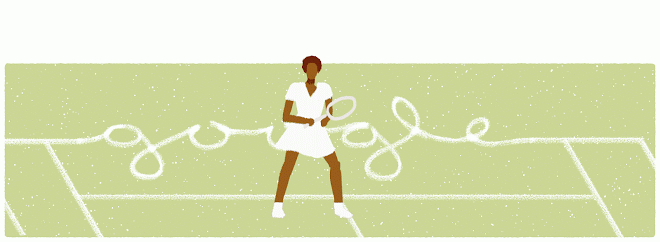by Celeste Montaño
Earlier this year, SPARK launched DoodleUs, a campaign asking Google to improve the representation of women and people of color in their Doodles. In case you missed it, Google Doodles are those fun animations that replace the Google logo on the company’s front page, often in celebration of historical individuals. And since we launched our campaign, a lot has happened.
Google acknowledged our campaign within the first day, and we got to speak via Google Hangout with Ryan Germick, the Doodle Team leader, and Megan Smith, a Vice President at the company. (Yes, we hung out with Google!) They told us that even before our petition, they were already making plans to ensure that men and women have 50/50 representation in the 2014 Doodles. But the best part is that SPARK and Google are talking together about ways to raise awareness of women’s historical contributions.
Despite the busyness of the past few months, we haven’t stopped tracking the gender and racial distributions of the Doodles. When we launched DoodleUs back in late February/early March, it was too early for patterns to emerge in the 2014 Doodles. But now that most of the year has flown by, we figured it was time for an update.
So, good news first:
Compared to 2013, representation of women in Google Doodles has definitely improved, with the number of Doodles celebrating women more than doubling. In 2013, only 22% of the doodles celebrated women, whereas this year that number rose to 46.3%. In fact, during every month of 2014, the ratio between men and women has been pretty close to 50/50. Ann Martin of Speaking Up for Us shows similar findings–as of her May 2014 count, Google’s representation of women in Doodles increased 78% overall.
Not that Google should declare victory yet, since analyzing based solely on gender gives us a skewed view of what’s going on. When we examine the Doodles through the lens of both gender and race, we get a different picture. Like white women, women of color are now represented in Doodles twice as much as last year, going from 6.4% to 12.2%. But that still means that white women are celebrated almost three times as much as women of color—12% v. 34%. And the trend appears overall, not just between women: white people are celebrated 68.3% of the time, and people of color honored less than half as often—31.7% of the time.
the Doodles through the lens of both gender and race, we get a different picture. Like white women, women of color are now represented in Doodles twice as much as last year, going from 6.4% to 12.2%. But that still means that white women are celebrated almost three times as much as women of color—12% v. 34%. And the trend appears overall, not just between women: white people are celebrated 68.3% of the time, and people of color honored less than half as often—31.7% of the time.
When Google acknowledged SPARK’s DoodleUs campaign, they spoke of women being underrepresented in the Doodles, but didn’t mention other factors that SPARK took into account, namely race and region. So while the situation has improved significantly for white women, the problem of underrepresentation mostly remains the same for women of color. It’s a problem that we see repeatedly when large corporations and organizations try to improve their treatment of one identity (in this case, gender) without considering that one person can have several identities (for example, you can be a woman and a person of color at the same time).
If Google is truly committed to increasing diversity in their Doodles, it also needs to break away from the notion that all history originates in Europe. It’s an idea they’re still perpetuating by having the vast majority of their Doodles honor European individuals. Of the current 82 Doodles, 47 have honored people from Europe. That’s more than half. The only region that even comes close to Europe’s 47 Doodles is North America, with 12.
But it should start getting better, potentially any minute now. Germick told us this year that Google plans Doodles about six months in advance, meaning that all the Doodles we’ve seen this year were planned before DoodleUs even launched. And since we unleashed our research six months ago in late February, Doodles that were made with our findings in mind could start appearing right around now.
Although even if things suddenly change, it will take months for new patterns to emerge, so we might not see significant change until 2015. It’s a waiting game at this point. But we’re still excited to talk about amazing women in history, so in the meantime we’re having some pretty great conversations with Google about ways to create a sort of digital monument to women in history. We’ll keep you posted on that–and as for any diversity in future Doodles, we’ll keep an eye out.
